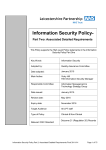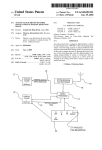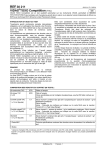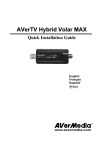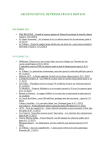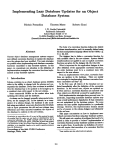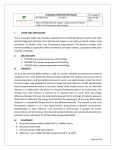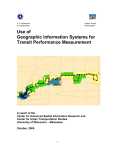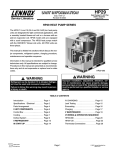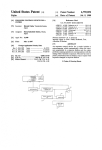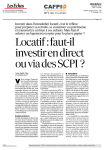Download .6 j H
Transcript
US006249717B1 (12) United States Patent (10) Patent N0.2 Nicholson et al. (54) US 6,249,717 B1 (45) Date of Patent: LIQUID MEDICATION DISPENSER APPARATUS (75) Inventors: Laurence R. Nicholson; Cli?' Tyner; Jun. 19, 2001 4,674,652 * 4,695,954 * 6/1987 Aten etal. ............................. .. 221/3 9/1987 Rose et a1. 364/479.14 4,725,997 2/1988 Urquhart et al. ......... .. 368/10 477367871 : 4/1988 Leciani et a1 Debra Valley; I4I Robert McEnroe, A. Britts, all ofNevada Grass City; 222/30 (List Continued P15011611 on .............................. next page) .. Philippe Pouletty, Woodside; Ralph Levy, pieasanton, all of CA (Us) . , FOREIGN PATENT DOCUMENTS , 0 298 627 (73) Ass1gnee: SangStat Medical Corporation, (*) Notice: 1/1989 0 533 300 A1 EP . 3/1993 EEP; ' Fremont, CA (Us) 533300141 * 3/1993 (EP) .............................. .. 364/479.01 WO 86/06048 10/1986 (WO) . Subject to any disclaimer, the term of this patent is extended or adjusted under 35 W0 93/204536 U.S.C. 154(b) by 0 days. 10/1993 (W0) _ (60) Provisional application No. 60/030,641, ?led on Nov. 8, OTHER PUBLICATIONS FDA Approval Report on CycloTech, Aug. 1998* Sangstad Medical Corporation Reorts Second Quarter Results, Business Wire, Aug. 1999* Abott Laboratories Completes Equity Invenstment in Sang Star, Business Wire, Aug. 1999* Cyclosporine Oral Solution Dispenser Gains FDA Accep 1996 tance, Medical Data International, Aug. 1998* (51) (52) Int. Cl.7 .................................................... .. G06F 17/00 US. Cl. ........................ .. 700/241; 700/244; 700/236; Primary Examiner—Christopher P. Ellis Assistant Examiner—Michael E. Butler (58) Field of Search .......................... .. 364/47914, 479.1, (21) Appl- NO-I 08/867,010 (22) Filed: Jun. 2, 1997 Related US. Application Data 222/246; 368/10 364/47906, 479.03, 479.01, 479.02, 479.07; 222/644, 642, 39, 30, 638, 639, 36, 37, 71, 246; 22/2; 221/7; 700/29 C, 236, 244, 241; 368/10 (56) (57) ABSTRACT Aliquid medication dispenser apparatus Which provides for user-friendly medication measurement and compliance. The apparatus measures and dispenses liquid medication doses References Cited and records the time and dose siZes for up to one year. The Us PATENT DOCUMENTS recorded information can then be downloaded to a personal 4,034,757 4,276,999 (74) Attorney, Agent, or Firm—Flehr Hohbach Test Albfi?OIl & Herbert LLP computer for evaluation of patient compl1ance.Ad1sposable, 7/1977 Glover ................................. .. 222/30 * 4,442,953 4,473,884 * 7/1981 - 364/4791 Reichenberger .... .. 4/1984 Behl 9/1984 Miyamoto .................... et al. .. . " / ' 4,588,303 * 5/1986 Wirtschafter et al. 368/10 4,616,316 * 10/1986 Hanpeter et al. 364/47914 4,619,653 * 10/1986 Fischell .............................. .. 604/891 24 44 motor driven pump is used to provide a Very occur With a manual dispense system. 20 Claims, 8 Drawing Sheets 1e 58 50 42 .6 j H 1 78 14/ 88 66 range of medication dispensation volumes, While maintaining full accuracy and reducing the risks of patient errors as might 64 3e t 86 as US 6,249,717 B1 Page 2 US. PATENT DOCUMENTS 4,792,449 12/1988 Ausman 6161. ................... .. 424/440 ‘5173227322 * g/iggg ?f‘flen?hh- "-1’ 7 5,108,889 * / 4/1992 9m“ eta' 81111111 ....... .. ----§6i2516/g ' . * 3/1998 PCIIOIIC ......................... .. 340/309.15 5/1998 W61161s 221/3 221/2 5,405,616 5,431,299 5,490,610 * 5,703,786 * 12/1997 Conkright ..................... .. 364/479.07 * 9/1993 LOldl 5,389,382 * ~~~~ N 22269 5,751,661 3/1994 PeaISOIl 9/1994 1/1995 368/10 576957091 6 12/1997 WiningSetaL 5,724,021 5,292,029 * 3/1996 Hoffman et a1. ................... .. 607/120 7/1997 GOllSiIl / 435/4 5,246,136 5,347,453 5,377,864 5,496,360 * 5,646,912 * 5,764,522 * 5,772,074 * . 6/1998 s11616v 6/1998 131616161. .. 364/413 .... .. 221/2 5,876,754 * 3/1999 Wunderhch et a1. 2/1995 M66s116 13166111616. . L1s16161. ......... .. .. 604/500 6,018,289 * 6021918 * 1/2000 22000 4/1995 Wllnderlich 6161. . 424/451 7/1995 Brewer et a1. .. 221/2 2/1996 Pearson .................................. .. 221/2 7 7 / * cited by examiner ..... .. 368/10 .. 364/4791 . . Sekllfa 6161. D t t 1 .... .. 222/37 424/489 . 340/309.4 2212 “In” 6 a' ~~~~~~~~~~~~~~~~~~~~~~~~ ~~ / U.S. Patent Jun. 19, 2001 Sheet 1 of 8 US 6,249,717 B1 10\\ l A ‘y II ROTATION 16 sENsOR f F18 K30 LCD AUDIBLE 4MH Z I ALARM ‘-| ‘l 22 / ALARM KEY K 12 CLOCK II / CONTROL ' lNCREME/NT ' 32 KHZ MIORO- < PROCESSOR II II II II II 32 I CLOCK II 24 / _ DISPLAY/ SERIAL INTERFACE DOSE ‘V KEY 26 / L34 RAM DISPENSE A : SWITCH \ 2O /28 PUMP _ MOTOR ‘V \36 BOTTLE SWITCH MEDICATION CASSETTE \14 FIG. — 1 U.S. Patent Jun. 19, 2001 Sheet 4 of 8 US 6,249,717 B1 D3 / LED S3 SET/ DISPLAY D5 D6 MMBD914 MMBD914 HEADER 24 LCD DISPLAY LCD BOARD FIG. — 2C 84 ALARM U.S. Patent Jun. 19, 2001 Sheet 5 of 8 US 6,249,717 B1 /-44 42 U.S. Patent Jun. 19, 2001 Sheet 6 of 8 46 TAKE DOSE 24 HEHI'UI US 6,249,717 B1 U.S. Patent Jun. 19, 2001 Sheet 7 of 8 US 6,249,717 B1 24 14/ 88 66 64 86 US 6,249,717 B1 1 2 LIQUID MEDICATION DISPENSER With the programmed treatment plan. The device utiliZes a disposable, motor driven pump and medication reservoir to provide a very Wide range of volumes, While maintaining full accuracy and reducing the risks of patient errors as might occur With a manual dispensing system. In general terms, the invention comprises a medication cassette With an interchangeable and disposable reservoir and ?uid path assembly, means for adjusting the amount of medication delivered, timer means for measuring time, memory means for storing data, display means for providing APPARATUS CROSS-REFERENCE TO RELATED APPLICATIONS This application claims priority from US. provisional application serial No. 60/030,641 ?led on Nov. 8, 1996, entitled “Liquid Medication Dispenser Apparatus,” Which is incorporated by reference herein in its entirety. 10 visual and audio output to a user, and control processor BACKGROUND OF THE INVENTION means for monitoring and recording the time and number of medication dosages dispensed, for alerting the user of the 1. Field of the Invention This invention pertains generally to devices and methods for dispensing medication, and more particularly to a liquid time for taking medication dosages, for monitoring he 15 medication dispenser apparatus that monitors compliance alarm means for alerting a user, and a communications interface for linking the control processor means With an external computer, are also included With the invention. A With a treatment plan and determines a compliance score indicative of Whether the liquid medication Was dispensed at predetermined times and at predetermined dose levels. 2. Description of the Background Art 20 Medication recipients frequently need to take a set dose of medication or medications at regular intervals of time. liquid dispensing valve assembly and pump are used for dispensing liquid medication from the reservoir and through the ?uid path assembly. By Way of example, and not of limitation, the control Failure by persons to take the required medication dosages at the appropriate time intervals results in incorrect blood serum levels of the medication, and can ultimately lead to unfavorable clinical outcomes. For several reasons, incor amount of medication remaining in the medication cassette, and for computing a compliance score. Preferably audible processor means preferably comprises a conventional 25 rect liquid medication dosages are often taken by patients. Liquid medication dosages are typically measured by pour microprocessor, or other programmable data processor, Which may be in digital or analog format. The timer means comprises ?rst and second timers interfaced With the ing the medication into a tea spoon or small container prior to taking the medication. This manner of dosage measure ment is prone to inaccuracy and can result in Wasted microprocessor, With the ?rst timer preferably comprising a 32 KHZ timing circuit for real time monitoring by the microprocessor, and the second timer preferably comprising a 4 MHZ clock for basic processing by the microprocessor. The microprocessor may additionally include an internal medication and unpleasant messes due to spills during measurement. Further, the amount of liquid medication remaining in a container cannot be easily determined, unlike “Watchdog” timer. The display means preferably comprises a multi-?eld liquid crystal display (LCD) or light emitting diode (LED) display operatively connected to the micropro solid medications Wherein the patient can count the number of pills present, and thus the patient can run out of 35 cessor. The audio alarm means preferably comprises a conventional pieZoelectric Watch alarm device, and is opera medication, resulting in missed or skipped medication dos ages. Additionally, patients Who must take numerous medi tively coupled to the microprocessor. The liquid dispensing pump has a pump motor With a rotation sensor associated cations on a regular basis can easily loose track of the time at Which a particular medication Was most recently taken, With the rotating shaft of the motor. The rotation sensor is preferably an optical rotation encoder and is operatively coupled to the microprocessor to alloW monitoring of medi resulting in omission by the patient of required dosages or exceeding the dosage requirement. Frequently, the timing cation dispensing events. The memory means preferably comprises at least 2K of random access memory (RAM) requirements vary for dosages of different medications and further lead to patient confusion and error in taking the different medications at correct time intervals. Accordingly, there is a need for a liquid medication 45 dispenser Which alerts patients of the correct time intervals for taking liquid medications, Which keeps track of and displays the number of dosages of liquid medication taken, and Which quickly, consistently and accurately measures and dispenses dosages of liquid medication. The present inven receives an interface cable for connection to a personal computer. 50 It is an object of the invention to provide a liquid medication dispensing apparatus Which uses standard 50 ml medication bottles, has a disposable ?uid path fully enclosed tion satis?es these needs, as Well as others, and generally overcomes the de?ciencies found in the background art. BRIEF SUMMARY OF THE INVENTION Which is accessible by the microprocessor. The communi cations interface preferably comprises an optical interface operatively coupled to the microprocessor, and Which 55 in the dispenser’s plastic case for easy carrying, has a 0.1 ml to 5 ml dose range, has 0.1 ml resolution, exhibits high accuracy at 5 ml, has only tWo user keys—a Display/Dose key and an Alarm/Increment key, employs a liquid crystal The present invention pertains to a liquid medication display (LCD), has at least one year memory at 2 doses per dispenser that monitors treatment compliance. It is designed day (uploadable to a personal computer), has at least several to be extremely convenient and easy to use by the patient, While still providing state-of-the-art features for the health care provider. It measures and dispenses liquid medication doses, recording the time and siZes of doses, as Well as information pertaining to compliance With a programmed 60 treatment plan, for up to one year or longer. The device can be programmed, and information retrieved from the device, using a personal computer. Information doWnloaded from the device can then be used to evaluate patient compliance 65 months of battery life, uses common “AA” type alkaline batteries for poWer, and uses a pump technology for Wide volume range and less patient error. The invention provides for dispensing a measured dose of a liquid therapeutic drug to a patient and records the timing and amount of dose dispensed. The dose and/or timing history can be revieWed by a patient, physician or other health care provide, either as raW data or as a calculated “compliance score.” The invention is particularly suited for US 6,249,717 B1 3 4 dispensing a liquid immunosuppressive drug to a transplant patient, and can be adapted for dispensing multiple drugs. Further objects and advantages of the invention Will be brought out in the folloWing portions of the speci?cation, Wherein the detailed description is for the purpose of fully disclosing preferred embodiments of the invention Without placing limitations thereon. operation of pump motor 36 Which is mechanically coupled to the medication cassette 14. A rotation sensor 38 monitors shaft rotation of pump motor 36 to sense the amount of liquid dispensed. Referring also to FIG. 2A through FIG. 2C, Which shoWs an exemplary schematic diagram corresponding to the con BRIEF DESCRIPTION OF THE DRAWINGS The invention Will be more fully understood by reference to the folloWing draWings Which are for illustrative purposes 10 processor 12 comprises a Microchip PIC16LC64A or like device. Pump motor 36 is preferably coupled to control microprocessor 12 by driver in the form of a simple tran only: FIG. 1 is a functional block diagram of a liquid dispensing apparatus in accordance With the present invention. sistor pair Wherein one transistor turns the motor on in one 15 FIG. 2A through FIG. 2C is a schematic diagram of a direction, and the other transistor shorts out the motor to apply an electronic brake function. Alternative microproces liquid dispensing apparatus in accordance With the present invention corresponding to the functional block diagram sors Which may be used With the invention include National Semiconductor COP842CJ and COP988CS, Microchip shoWn in FIG. 1. FIG. 3 is a side elevation vieW of a liquid dispensing PIC16C57, NEC 75304, Motorola 68HC05, Phillips 80C51, Toshiba TMP87CH800LF, Oki MSM64162 and Hitachi micros. Control microprocessor 12 preferably includes a built-in independent Watchdog oscillator and timer as con ventionally found in such devices. The Watchdog timer runs continuously, uses very little poWer and, if the Watchdog apparatus in accordance With the present invention. FIG. 4 is a front elevation vieW of a liquid dispensing apparatus in accordance With the present invention. FIG. 5 is a top plan vieW of a liquid dispensing apparatus in accordance With the present invention. trol circuitry shoWn in FIG. 1, control microprocessor 12 preferably comprises a conventional microprocessor, or other programmable data processor, Which may be in digital or analog format. In the embodiment shoWn, control micro 25 timer is not cleared periodically as may occur if the softWare hangs up for some reason, it Will timeout and cause a FIG. 6 is a cross-sectional vieW of a liquid dispensing apparatus in accordance With the present invention taken processor reset. The microprocessor preferably provides through line 6—6 shoWing the disposable cassette assembly up reset, alloWing the softWare to simply continue if a failure ?ags to differentiate betWeen a Watchdog reset and a poWer in place With a liquid medication bottle attached. FIG. 7 is a partial cross-sectional vieW of the disposable cassette assembly portion of FIG. 6 With the liquid medi cation bottle removed. occurs. Thus, the clock and other current data is not lost or corrupted. Display 16 is preferably a conventional commercial grade multi-?eld liquid crystal display (LCD) With a re?ective FIG. 8 is a diagrammatic vieW of a basic screen display in accordance With the invention shoWing three vieWing 35 ?elds. FIG. 9 is a diagrammatic vieW of a second screen display in accordance With the present invention. FIG. 10 is a diagrammatic vieW of a third screen display in accordance With the present invention. vieWing mode, a 12-o’clock vieW angle, and a multiplexed electrical drive. Preferably display 16 is softWare driven directly from the pins of control microprocessor 12 to reduce circuit board space and the number of solder joints required. Alternatively, display 16 could be driven using a conven tional driver circuit, either internal or external to control microprocessor 12. HoWever, microprocessors With LCD drivers tend to increase cost. DETAILED DESCRIPTION OF THE INVENTION Referring more speci?cally to the draWings, for illustra tive purposes the present invention is embodied in the apparatus generally shoWn in FIG. 1 through FIG. 10. It Will be appreciated that the apparatus may vary as to con?gura tion and as to details of the parts Without departing from the 45 in the range of 3 to 4 KHZ. The device is similar to those used in Watches With alarms and small clocks. For storage of important data, memory 20 preferably comprises non-volatile random access memory (RAM) or the like, Which alloWs the batteries to be changed or poWer basic concepts as disclosed herein. disturbances to occur Without loss of data or clock time. The Referring ?rst to FIG. 1, there is shoWn generally in block diagram form a liquid medication dispenser 10 in accor dance With the present invention. Dispenser 10 generally comprises a control microprocessor 12 Which provides the overall control functions of the device, including monitoring and recording the number of medication doses dispensed Audible alarm 20 preferably comprises a conventional small, loW-cost, loW poWer pieZoelectric element that can be used to generate alarms in the form of high frequency tones preferred memory is a conventional 2K EE memory chip such as the Microchip 24LC16B, Which operates in a loW voltage range. Memory internal to the particular micropro 55 cessor selected may alternatively be used. Timing functions are carried out by tWo time-base clocks. from a medication cassette 14, alerting the user of the time For the microprocessor shoWn in FIG. 2, clock 28 is pref for taking medication dosages, monitoring the amount of medication remaining in the medication cassette 14, and erably a 4 MHZ clock that is used for basic processing When the microprocessor is aWake. On the other hand, clock 30 is preferably a 32 KHZ clock that runs continuously to provide a time base for a real time ten minute clock. By stopping the faster 2 MHZ clock most of the time, substantial battery poWer is saved. Referring also to FIG. 3 through FIG. 5, a hand-held computing a compliance score. User feedback from the device is provided both by a visual display 16 and an audible alarm 18. Memory 20 is provided for storage and retrieval of data, and various keys/sWitches 22, 24, 26, 28 are provided for user and/or general operation. Timing and clock operations are provided by a pair of clocks 30, 32. A serial interface 34 is also provided for linking the device to an external computer. Liquid medication is dispensed by 65 housing 40 contains the functional components of dispenser 10. Housing 40 includes a physical dispense trigger 42 Which operates dispense sWitch 26 (FIG. 1 and FIG. 2B). US 6,249,717 B1 5 6 Referring more particularly to FIG. 5, the upper portion 44 of housing 40 includes a user control panel 46. Control panel reservoir for storage of the medication to be dispensed. The 46 includes display 16, Which has three viewing segments 48a, 48b, 48c. Control panel 46 also includes alarm/ increment key 22, display/dose key 24, a “take dose” alarm light 50 Which is a conventional light emitting diode (D3 in FIG. 2B), and a conventional phototransistor 52 (D4 in FIG. 2B). Liquid medication is dispensed through the loWer portion 54 of housing 40. mately 50 ml, Which is a standard siZe. Liquid medication Note that alarm light 50 also functions as the emitter siZe of liquid medication bottle 76 is preferably approxi bottle 76 screWs into a receptacle 78 Where it is secured in place and positioned adjacent to pump ori?ce 80. An air vent tube 82 coupled to a hydrophobic vent 84 is provided for extending into liquid medication bottle 76 to assist With pumping operation. Connecting rod 64 is coupled to shaft 62 of motor 36 by means of a reciprocating crank 86 for 10 portion of serial interface 34, While phototransistor 52 1, FIG. 2B) is toggled by a sWitch lever 90 that contacts liquid medication bottle 76 Whenever medication cassette 14 functions as the receiver portion of serial interface 34. Alternatively, a dedicated light could be used for alarm light 50 and serial interface 34 could comprise a conventional infrared transceiver mounted in the case of dispenser 10. In any of these embodiments, to communicate With a personal is installed or removed. 15 computer (PC) or the like an interface cable (not shoWn) is 10, Where an upper digit set 92 is shared betWeen a count timing and command protocol is then used for communica 25 on tWo printed circuit boards (PCB) 56, 58. PCB 56 carries most of the electronic components While PCB 58 primarily carries display 16. Display 16 is preferably connected to When dispenser 10 is in a poWer saving sleep mode, but the time value is maintained continuously in memory. The count doWn timer value is displayed Whenever dispenser 10 is control microprocessor 12 and related components through 35 that is programmed by the health care provider and displays the dose siZe along With an “mg” icon 94 to shoWn the amount of liquid medication to be dispensed. The count doWn timer and dose siZe values are also displayed during versions, button cells, etc. may alternatively be used. Generally, consideration must be given to the voltages required by the microprocessor used With the invention, the 45 cost, long life, and correct voltage for the microprocessor. Rotation sensor 38 preferably comprises an optical sensor that senses each revolution of shaft 62 of pump motor 36. Shaft 62 is in turn coupled to a connecting rod 64 that operates a pump piston 66 in medication cassette 14. This in the last hour prior to the dose time, alternating betWeen each other approximately every three seconds. In addition, if dispenser 10 is in a sleep mode it can be aWakened by pressing any key, and the count doWn timer Will display until dispenser 10 goes to sleep again or until the display/dose key 24 is pressed to toggle to another screen display. Those skilled in the art Will appreciate that other display param eters could easily be programmed into the apparatus. When the time value counts doWn to Zero as shoWn in FIG. 9, the “Take Dose” icon 96 begins to ?ash on display 16, an audible tone is heard from alarm 18 (FIG. 1, FIG. 2A), 55 the take dose light 50 (FIG. 5) ?ashes, and an alarm icon 98 ?ashes. Until the dose is taken, the visual indicators continue to ?ash and the audible tone repeats once every 10 minutes. Note that the patient may take the dose at any time, and the count doWn timer Will not prevent early dose taking. Note also that the alarm can be toggled on and off by depressing light path betWeen a conventional optical emitter/sensor pair 70 (D1, D2 in FIG. 2A) during rotation of shaft 62. It Will be appreciated that magnetic rotational sensors or other techniques could be used as alternatives to optical emitter/ sensor pair 70. Referring also to FIG. 7, medication cassette 14 com prises a removable assembly that snaps into the bottom portion 54 of housing 40 by means of a resilient latch 72 that engages a corresponding slot 74 in housing 40. Medication cassette 14 includes a liquid medication bottle 76 or like aWakened from the sleep mode or When the count doWn timer counts doWn to Zero signaling that it is time to take a dose. The dose siZe value is an integer number in milligrams batteries 60 such as “AA” alkaline. “AAA” alkaline, or “2/3 A” lithium batteries. Various other batteries, such as 9 volt turn senses each stroke of pump piston 66 during dispensing. The output from rotation sensor 38 is used by control microprocessor 12 to monitor the medication doses dis pensed and to calculate the remaining doses in medication cassette 14. The optical sensor preferably comprises a half moon shaped disk 68 coupled to shaft 62 that interrupts the Pressing the display/dose key 24 Will toggle through these The count doWn timer is displayed in hours and minutes and represents the time until the next dose. It is started each time a dose is dispensed With a time value programmed by the health care provider. The count doWn timer is not visible links, printer connections and the like. Referring to FIG. 6, dispenser 10 is preferably constructed life of the battery With a given electronic con?guration, and constraints on siZe, cost, and replacement availability. The alkaline cell batteries are presently preferred due to their loW doWn timer value, doses left value, and dose siZe value. displays. that plug into dispenser 10, modems, telephone links, radio a ?exible connector or the like (not shoWn) and is preferably mounted at a right angle to PCB 56. Alternative con?gura tions could also be used. Dispenser 10 is preferably poWered by one or more Referring also to FIG. 8 through FIG. 10, dispenser 10 generally operates in accordance With the folloWing criteria. 1. Alarm and Timer Functions Dispenser 10 includes alarm and timer functions Which provide a simple reminder to the patient to take medication regularly. These reminders comprise a count doWn timer, dose siZe indicator and visual and audible prompts. FIG. 8 shoWs the basic screen display con?guration for dispenser used. The interface cable preferably has an infrared trans ceiver in a small housing on one end, and either a 9 pin or 25 pin serial connector on the other end. The housing on the interface cable Would be adapted to ?t over housing 40 so that the infrared transceiver can be positioned adjacent to emitter 50 and receiver 52. Conventional communications tions. It Will be appreciated that other conventional commu nications means could be employed, including serial cables operation of pump piston 66, and liquid medication is dispensed through a ?apper valve 88. Bottle sWitch 28 (FIG. alarm/increment key 22. 2. Dosage Dispensing To dispense a dose of medication, the patient holds dispenser 10 over a drinking cup or other container. Dis pense button 42 (FIG. 3, FIG. 4) is then pressed and held 65 depressed for one to tWo seconds until a audible prompt is heard. Dispense button 42 is then released to start the dispense action. For safety, dispense button 42 must pref US 6,249,717 B1 7 8 erably be released Within one second or dispensing action Will occur. This timed interaction Will help prevent acciden tal dispensations of medication that might occur from mov volume, and the remaining volume divided by the dose siZe ing or bumping dispense button 42. Alternatively, a safety latch or locking mechanism could be employed instead of the foregoing press and release mechanism. Once started, dispenser 10 Will alWays dispense the programmed volume of medication. Dispenser 10 Will then sound a completion tone at the end of the dose. After the dose, digit set 92 Will automatically display the 10 integer number of doses left and a “Doses Left” icon 100 Will appear as shoWn in FIG. 8. If no other keys are pressed, dispenser 10 Will automatically go to sleep after a preset timeout period. Additionally, once a dose is dispensed, for safety and compliance purposes a subsequent dose cannot be dispensed until after a preset time period elapses as deter mined by an internal timer. That time period can, if desired, be set short of the neXt dose time; doing so Will permit the patient to take the neXt dose earlier than scheduled if desired, but not so early that the patient Will overdose. Alternative, the timer can be disabled altogether, thus overriding this and reinstalled partially full. For this sequence of early removal and re-installation, the number of doses left and the doses left icon 100 Will ?ash until medication cassette 14 is 15 override of the default value, alloWing early cassette replace ment by a properly instructed user or health care provider. If medication cassette 14 is changed With less than 6 ml left, the counter Will reset back to 50 ml, assuming a normal neW cassette replacement. The user should be instructed not 3. Dosage Display Icons to remove the cassette until the doses left value in display 16 25 tWenty-four hour period since 1 AM. Therefore, the display memory in RAM 20 to maintain a compliance history of up to approximately nine hundred and ?fty doses being dis pensed. TWo doses per day results in over ?fteen months of compliance history, and three doses per day results in over ten months of compliance history. Each dose is recorded as a time event With a resolution of ten minutes and a maXimum 35 The dose siZe is initially set by the health care provider using a personal computer coupled to serial interface 34. The ml. Display 16 shoWs this value in terms of milligrams at a rate of 100 mg per milliliter. Referring also to FIG. 5, the patient can change the dose 45 16 Will then automatically sWitch to shoW the dose siZe, the “mg” icon 94 Will ?ash, and an audible tone Will be heard. While the display/dose key 24 is held doWn, the alarm/ increment key 22 is then pressed repeatedly to increment the dose siZe to the desired amount in 10 mg steps. The value Will Wrap from 500 mg back to 10 mg and then repeat the 10 mg incremental steps for a total of ?fty steps. While changing the dose siZe, pressing and holding the alarm/ increment key 22 Will automatically increment the value about tWo or three steps per second. The dose siZe is 55 incremented in a temporary register during this procedure. Referring also to FIG. 10, an eXample of a display screen shoWing the number of doses left in medication cassette 14 compliance memory also stores the dose siZes. To save memory, it only stores a neW dose siZe in the compliance memory When the health care provider, patient or other user changes it. The values stored range from one to ?fty, corresponding to 10 mg to 500 mg. Changing the dose siZe uses the equivalent of one time recording, reducing the maXimum number of doses recorded by one for each change. Even in unusual cases Where the dose changes frequently, this should not impact the usefulness of the product. Optionally, the compliance memory could also store the time of each any medication supply change to con?rm correct usage of each supply. If the compliance memory has thirty or less memories available, the “service” icon 106 shoWn in FIG. 8 Will ?ash on the display and an audible alarm Will sound after each dose is taken. 7. Compliance Score Dispenser 10 also keeps a running history of the number can be seen. The actual volume draWn from medication cassette 14 is maintained internally and the remaining doses at the current dose siZe is computed and displayed. Since the starting volume and dose siZes are knoWn, the remaining doses are easily determined. Preferably, the starting volume is divided by the dose siZe to determine the total number of doses available, and then the number of dispensed doses subtracted from the starting number. Alternatively, the vol ume of dispensed doses could be subtracted from the starting time span of ?fteen months, based on the internal clock as set by the health care provider, patient or other user via a personal computer and serial interface 26. The actual values stored must be interpreted by the personal computer soft Ware upon doWnloading to establish actual days and months. In addition to storing the time of each dose dispensed, the dose siZes can be set in 0.1 ml increments from 0.1 ml to 5.0 siZe by pressing and holding the display/dose key 24 and the alarm/increment key 22 together for approximately three seconds. Any other sequence Will abort the change. Display tion supply bottles. Dispenser 10 preferably includes sufficient non-volatile Will be in the form of “1V”, “2V” and so forth for doses taken. The check marks are cleared at 1 AM of each day, and 4. Setting Dosages indicates one or Zero doses and to install only full medica 6. Compliance Memory a check mark 104 is used to identify each dose taken in a each dose causes another icon to light (Whenever the display is aWake). Up to four doses can be prescribed per day, and FIG. 8 through FIG. 10 shoW the display format after four doses have been taken. replaced. HoWever, if the user presses the display/dose key 24 during the ?rst ?ve seconds after removal of medication cassette 14, the counter Will reset back to 50 ml. This is an protection. The invention displays the doses to be taken in a given day in vieWing segment 48b of display 16 as shoWn in FIG. 8. The dose number is displayed as an integer value 102, and to determine the remaining number of doses. No dose Will be dispensed and an audible alarm Will sound if there is insufficient medication to give a full dose. The dose siZe and doses left icon 100 are alWays shoWn after a dose is taken. 5. Cassette Removal Alarm An audible alarm is sounded if medication cassette 14 is removed With more than 6 ml left in bottle 76. When medication cassette 14 is replaced, the supply counter Will be retained at its previous value. This sequence presumes that medication cassette 14 Was removed for inspection only, of doses taken each day for a compliance score period; for eXample, thirty days. From that history, it computes a percentage of compliance from the number of prescribed doses versus the actual number taken. Referring to FIG. 8, this value is then displayed as a score 108 in vieWing 65 segment 48c of display 16 for monitoring. The compliance score is updated as a function of time and dosing, and changes if dosing does not occur on speci?ed times or at US 6,249,717 B1 9 10 speci?ed does. The values are in increments of 1% steps, so score steps include 0% through 100%. Note that this infor mation is maintained in a separate portion of RAM 20 than the compliance memory for computation purposes, but can Wakeup and activate display 16. Dispenser 10 Will go back to sleep after tWo minutes of non-activity, termed the sleep also be cleared independent of the compliance memory. As The health care provider Would generally run a softWare program on an external personal computer to communicate “timeout” period. 11. Programming and Uploading Data a result, a patient’s score can continue uninterrupted even after uploading the compliance data. In order to determine the compliance score, When a dose is taken the “today’s dose” count is incremented, up to a maximum of four doses per day. At 1 AM of each day, the 10 dose count is set to Zero. Where the compliance score is computed over a thirty day running period, the past thirty days of counts are summed and the total days are counted. If the total number of days counted is less than ?ve, the count is forced to ?ve so that a 100% compliance score is not 15 reached until ?ve days of medication. The compliance score is then computed according to: With dispenser 10 for programming and reading the com pliance history. To enter the communications mode, the alarm/increment key 22 is held doWn for three seconds until display 16 goes blank. This indicates that dispenser 10 is ready to talk to the personal computer. The softWare on the personal computer is then run (or the correct function activated Within softWare that is already running). The personal computer then transmits various commands to dispenser 10 and establishes communications. When all communications are ?nished, pressing dispense button 42 (Which in turn activates dispense sWitch 26) causes dis penser 10 to exit the communications mode and return to Score=(sum of doses)/(doses per day * total day count) 20 and rounded to the nearest 1% increment. As can be seen, the compliance score is a critical indicator that the patient, health care provider or other person respon sible for monitoring treatment can use to determine if proper drug therapy is taking place. (a) The communications mode cannot be entered if dis penser 10 is in the process of setting a dose or dispens ing a dose. (b) The alarm/increment key 22 does not need to be held 25 8. General Memory Dispenser 10 also includes general memory in RAM 20 30 date and time that the unit Was programmed, the number of doses per day prescribed, and time interval presets (useful commands to either read data from or Write data to dispenser 10. A complete data transfer Will take approximately four to tWenty seconds, depending upon the amount of data trans ferred. Simply programming dispenser 10 Will be almost When 3 or 4 doses per day are prescribed). 9. Internal Clocks instantaneous since little data is transferred. For Dispenser 10 maintains a real time clock that is set via a 35 personal computer and serial interface 26. It does not regard date or months or time changes. It simply counts up every ten minutes to a maximum count of 65,530, or 10,922 hours, or 455 days. The time of day for day Zero is recorded upon programming. It is used to establish When the day rollover doWn during communications. (c) The internal clocks are suspended during the commu nications mode. The personal computer alWays acts as the master and issues that alloWs programming of the patient name or identi?ca tion (30 characters), the pharmacy name or identi?cation (30 characters), the device serial number (10 characters), the last normal operation. Preferably, the communications mode operates With the folloWing safeguards: 40 compatibility, a data rate of 2400 baud is used. 12. Programming Command Set Control microprocessor 12 includes programming Which Will generally carry out the operations of: (a) Programming patient name and identi?cation (ID). (b) Programming pharmacy name and ID. occurs to reset the “doses today” check marks 104. (c) Programming serial number (only used in production). When data is uploaded to a personal computer via the serial interface 26, the personal computer receives the cur rent real time clock value from dispenser 10 and computes actual days and times With this real time clock value relative to the real time and date from Within the personal computer. To establish the actual time and date of a particular dose, the dose time is subtracted from the current real time clock value to determine hoW much time has elapsed since the dose. The elapsed time is then used to determine an actual calendar date and time Within the personal computer. This ten minute clock is kept in non-volatile memory, so a battery poWer loss due to a drop, bump, or the patient changing the battery Will (d) Resetting real-time clock to current time, day Zero (10 minute clock). (e) Programming the dose siZe. 45 ex: 04,04,04,12). 50 (h) Resetting the battery timer (neW battery installed). (i) Clearing the compliance history memory. Clearing the compliance score memory (30 day histo gram data). (k) Reading data: This operation includes reading the compliance memory of all doses taken since compli not result in a full reset of the clock or confusion Within the compliance data. Optionally, When the clock is at a prede termined number of days, such as three hundred and sixty (f) Programming doses per day (one to four). (g) Programming dose intervals (4 tWo digit hours values. 55 ance memory Was last cleared (time for each dose and all dose siZes used), patient and pharmacy names and ID’s, device serial number, battery life timer, current ?ve days, or greater since a service by the health care provider, the service icon 106 Will ?ash on the display and real time clock, and time value When unit Was last an audible alarm Will sound after each dose is taken. programmed. All data is uploaded at one time, alloWing the personal computer to be used to further manipulate the data for displaying and/or printing. 10. Sleep Mode and Timeout 60 Dispenser 10 enters a sleep mode When not in use betWeen doses to save battery poWer. During that time, display 16 is blank and the only internal activity is clock maintenance. Pressing either the alarm/increment key 22 or the display/ dose key 24, or removing medication cassette 14, Will Wake up dispenser 10 and activate display 16. Also, one hour prior to the time for dosing, dispenser 10 Will automatically 13. Battery Change Timer 65 To save poWer and cost, dispenser 10 preferably does not utiliZe a battery voltage detector. Instead, it senses When the battery is removed and starts a timer When the neW battery is installed. After a preset period of time (e.g., six months) or after a certain number of dispenses since a battery change, US 6,249,717 B1 11 12 service icon 106 (FIG. 8) will light anytime the unit is addition, those skilled in the art will appreciate that various forms of circuitry can be used for the invention, and that the schematic diagram shown in FIG. 2 is but one embodiment that could be employed. For example, circuit elements could awake. Note that this timer is independent of the clock. This timer value can also be read by a personal computer over serial interface 26 so the health care provider can view it. As a routine, the health care provider should change the batteries regularly, even if the battery timer has not timed out, to insure reliable operation. 14. Replacing the Medication Cassette The empty medication cassette 14 is removed from dis penser 10 by squeezing the two side latches 74 (FIG. 6) at the bottom portion of dispenser 10 and removing the entire medication cassette 14. This includes the liquid medication bottle 76 and disposable ?uid path components. To load a be replaced with digital or analog equivalents. Furthermore, it will be appreciated that control microprocessor 12 and its associated programming and relate components provides the means for carrying out the timing, recording and dose 10 above, as well as control of medication cassette 14 and communications with external devices such as a personal computer. Also, the programming sequences and steps for new medication cassette 14 into dispenser 10, the cassette assembly is inserted into dispenser 10 until the two side latch assemblies 72, 74 engage. tracking functions, and related computations described 15 control processor 12 can vary without departing from the scope of the invention. Those skilled in the art will appre ciate that conventional programming techniques would be employed to implement the functions described herein with respect to remotely programming and interrogating dis penser 10 with an external personal computer. The design Medication cassette 14 is assembled using a standard bottle of the medication and a disposable ?uid path assem bly. The medication cassette is automatically primed during the ?rst dose after it is installed, eliminating any pre-priming and coding of such software to carry out those functions by the health care provider or the patient. The accuracy of could be readily developed by a person having ordinary skill the priming action may introduce a small degree of error on in the art and, are not described herein. smaller doses, and compensation may be necessary. Note that if medication cassette 14 is removed and then reinstalled, the ?rst dose administered will be over-dosed by the priming volume, which is in the range of approximately 25 Potential Hazard Level of Potential Concern Cause Solution Provided by the Invention Moderate Incorrect dose The actual dose size is always size programmed by PC. displayed prior to dispensing. The dose size is initially programmed by a professional pharmacy. The patient is instruc Incorrect dose The actual dose size is always 0.1 ml to 0.2 ml. Dose too 15. Possible Hazards Overcome by the Invention Table 1 lists various hazards or dangers associated with Small the taking of medications, and indicates how the present invention overcomes or avoids these hazards. Preferably, a ted to observe the dose size. user manual is provided with the invention which explains the solution provided by dispenser 10. The “level of con cern” column shown in Table 1 corresponds to the FDA’s de?nitions regarding the potential harm done to a patient. In all hazard cases, the mitigated level of concern is reduced to MINOR CONCERN, causing little or no harm to the patient. Accordingly, it will be seen that this invention provides a 35 displayed prior to dispensing. grammed by The patient is instructed to observe the dose size. Patient does Patient is instructed on use of not allow com- the device when issued. The plete dispense into glass. liquid medication dispenser which alerts patients of the correct time intervals for taking liquid medications, which keeps track of and displays the number of dosages of liquid medication taken, which quickly, consistently and accu rately measures and dispenses dosages of liquid medication in a user friendly manner, and which records the date, time and dose level so that treatment compliance can be reviewed size propatient. shown) indicating the dispense location on the bottom to insure the medication goes into the glass. Disposable pump not to motor cam inserted. The software monitors the proper insertion of the medication supply and will not dispense and will cause an alarm suppressive therapy in transplant patients. Using an immu nosuppressive drug such as cyclosporine, tacrolimus, myco phenolate mofetil, mycophenolate acid, raapamycin or azathioprine, steroids, le?umomide, on a daily basis (e.g., if not properly inserted. once, twice or four times a day) at the appropriate dose is essential to transplant outcome. Insuf?cient dosing can Medication The software maintains a record supply goes empty during dispense. of the quantity of medication left in the medication cassette and will not dispense and will cause an alarm if there is insufficient solution in the supply. 55 Fluid path The dispenser automatically not primed primes the ?uid path with the ?rst dispense after changing the cancer or neurotoxicity. Patients need speci?c education and monitoring; they typically have three to ten medications per Electronic day to use on a chronic basis. Measuring compliance, or lack failure of compliance, can help healthcare professionals to better direct their education and monitoring efforts toward certain medication cassette. The electronics use a full time watchdog to reset the micro upon program failure. The soft ware uses timeouts to insure that the motor is rotating and alarm if patients. there is a motor failure. Although the description above contains many mined by the appended claims and their legal equivalents. In The disposable and motor cam are designed to self-?t, provided properly mated the disposable ?uid path is fully 45 treatment. The invention is particularly suited for immuno speci?cities, these should not be construed as limiting the scope of the invention but as merely providing illustrations of some of the presently preferred embodiments of this invention. Thus the scope of this invention should be deter same instructions. Housing 40 can include an arrow (not by the patient and/or healthcare professional supervising the result in acute graft rejection and graft loss. Excessive dosing can result in nephrotoxicity, liver toxicity, infectious instruction manual contains the No dose delivered 65 Moderate No medication supply present The software monitors the prop er insertion of the medication or not inserted supply and will not dispense and fully. will cause an alarm if a dispense is attempted when the supply is not present or not fully inserted. US 6,249,717 B1 13 14 -continued -c0ntinued Potential Level of Potential Solution Provided by the Potential Level of Potential Solution Provided by the Hazard Concern Cause Invention Hazard Concern Cause Invention Medication The software keeps a record of Remaining Minor Supply Was An alarm is sounded if a supply empty the remaining medication supply supply removed and medication cassette is removed and Will not dispense and Will cause an alarm if a dispense is counter has incor- reinstalled partially ?lled. With more than 6 ml left in the bottle. When the cassette is then attempted When the record indicates an empty supply. Disposable The disposable and motor cam pump not are designed to self-?t, provided properly mated the disposable ?uid path is fully to motor cam rect value. reinstalled, the supply counter is retained at its previous value. The “Doses Left” display ?ashes With until the cassette is replaced. If the user presses and 10 inserted. The softWare monitors the proper insertion of the medication supply and Will not dispense and Will cause an alarm Battery too loW for operation 5 holds the display/dose key dur ing the ?rst 5 seconds after removal of the cassette, the 15 counter Will reset back to 50 ml. if not properly inserted. The softWare detects When the battery has been removed and times the total operation time since the neW battery Was inserted. An alarm is given on If the cassette is changed With less than 6 ml left, or the Dis penser is alloWed to go to sleep, the counter Will reset back to 50 ml. The instruction manual shall include a Warning not to remove 20 the display When the battery has the cassette until the “Doses been in place for 365 days. The Left” display indicates actual eXpected battery life is on or zero doses and to install longer than this, insuring correct only full medication supply operation for the full time. In addition, the user’s manual instructs both the health care bottles. The electronic design and battery operation insure Compli- Minor 25 ance Electronic failure provider and the patient to only Memory minimal memory corruption. replace the batteries With neW corrupted The softWare stores the data in a ones. Dose too Moderate big format Whereby data points Incorrect The actual dose size is alWays are not interdependent and a dose size displayed prior to dispensing. failure Will most likely only programmed The dose size is initially by PC programmed by a professional pharmacy. The patient is in- Incorrect dose size displayed prior to dispensing. cause one data point to fail. Health Minor care provi- Patient records The device alloWs important are not patient and prescription structed to observe the dose size. der cannot available The actual dose size is alWays interpret device memory and is recovered compli- Whenever the compliance programmed by The patient is instructed to patient Electronic failure 30 35 ance data observe the dose size. The electronics use a full time Watchdog to reset the micro upon program failure. The soft- Internal clock stops Dispenser Ware uses timeouts to insure that Will not the rotation sensor is Working memory is read. Minor to moderate Minor Electronic failure Electronic The device utilizes a full time Watchdog to reset the micro if a clock failure occurs. The device utilizes a full time failure Watchdog to reset the micro if a Patient has When the compliance memory is Within 30 doses of being full 40 operate correctly and alarms if there is a Compli- information to be held Within the clock failure occurs. Minor sensor failure. ance not seen Accidental Minor Dispense The softWare requires that the Memory is health Care (about 2 Weeks), an alarm is Set Dose dispense hhttoh accidentally pressed Dispense hhttoh is Pressed and held for 2 seconds, and then released Within 1 second after an full provider after each dispense, indicating that the device must be Serviced The Compliance memory can or bumped. audio prompt to validate a 45 hold up to about 15 months of dispense request. A latch or lock data With a t mechanism could alternatively Doses Minor to missed moderate Doses Minor taken too Patient does Dose taken late Minor p ' The device displays a count the health Care phovlder for other not dispense doWn timer and alarms When it is time for the patient to take a dose. The device continues to alarm every 10 minutes until the dose is taken. The device also displays a record of the doses taken today and a score of patient compliance Within the last 30 days (Of other FY9156t Period) The Compliance Them‘ reasons behofe thls time‘ The Patient has Software utlhzes a Flrclllar memory eehhghratleh 1h the eOIhPhahee rhethery- If the memory is full and is not serviced, the softWare Will over Write the oldest data points With the neWer ones. Thus, only the more recent doses can be read. The device alarms for service QTY else Provides the health Care time not seen after 365 days upon each professlcfnal ‘71th Complete: gzlslistzllilng hlstory for panent Wraps back to health care provider. dispense. If the patient continues to avoid service beyond 455 Patient dis- The countgdoWn timer does not penses early . instruct the user to take Patient delays dosing ical rescri tion Yp Atypical patient Will have to see dose When prescribed soon . be used- 50 55 Clock 60 Zero' Minor days’ the Internal lock and . compliance data time values Will . medication until the prescribed Slmply “Trap around to Zero and time“ start again. The health care When the prescribed time has elapsed since the last dose, the device alarms every 10 minutes until a dose is taken. 65 provlder Or the host PC scfftware may have to do some addltlehal interpretation to decipher this. US 6,249,717 B1 15 16 (e) means for displaying said compliance score, Wherein What is claimed is: 1. An apparatus for therapeutic drug therapy, comprising: (a) means for dispensing a plurality of oral doses of a said compliance score provides a percentage of com pliance based on the number of speci?ed doses versus liquid therapeutic drug from a medication container; the actual number taken, and changes if dosing does not occur at speci?ed times or at speci?ed dosages; and (b) means for recording the siZe of said doses of the liquid (f) means for monitoring said compliance score. 12. An apparatus as recited in claim 11, Wherein said therapeutic drug dispensed; (c) means for recording the dates and times said doses are liquid medication contains a hydrophobic drug. dispensed; 13. An apparatus as recited in claim 11, Wherein said (d) means for comparing the siZe of said doses of liquid therapeutic drug dispensed and the dates and times said doses are dispensed With prescribed dosages and pre liquid medication contains cyclosporine. 14. An apparatus as recited in claim 11, Wherein said liquid medication contains an immunosuppressive drug. scribed times for dispensing the liquid therapeutic drug 15. An apparatus as recited in claim 11, further compris and determining a compliance score as a function of said comparison; and (e) means for displaying said compliance score, Wherein ing means for alerting a user that a dose of said liquid 15 said compliance score provides a percentage of com pliance based on the number of prescribed doses versus said medication container. 17. An apparatus as recited in claim 16, further compris the actual number taken, and changes if dosing does not occur at prescribed times or at prescribed dosages. 2. An apparatus as recited in claim 1, further comprising means for monitoring said compliance score. 3. An apparatus as recited in claim 1, Wherein said liquid medication contains a hydrophobic drug. 4. An apparatus as recited in claim 1, Wherein said liquid medication should be dispensed. 16. An apparatus as recited in claim 11, further compris ing means for determining the remaining number of doses in 25 ing means for displaying said remaining number of doses. 18. An apparatus as recited in claim 11, further compris ing timer means for preventing a dose of said liquid medi cation from being dispensed prior to a speci?ed time period after a previous dose has been dispensed. 19. An apparatus as recited in claim 18, further compris medication contains cyclosporine. ing means for overriding said timer means. 5. An apparatus as recited in claim 1, Wherein said liquid medication contains an immunosuppressive drug. 6. An apparatus as recited in claim 1, further comprising prising: 20. An apparatus for dispensing liquid medication, com (a) means for dispensing a plurality of doses of liquid means for alerting a user that a dose of said liquid medica medication from a medication container; tion should be dispensed. 7. An apparatus as recited in claim 1, further comprising means for determining the remaining number of doses in said medication container. 8. An apparatus as recited in claim 7, further comprising means for displaying said remaining number of doses. 9. An apparatus as recited in claim 1, further comprising timer means for preventing a dose of said liquid medication (b) means for displaying the remaining number of doses in said medication container; (c) means for alerting a user that a dose of said liquid 35 from being dispensed prior to a speci?ed time period after a previous dose has been dispensed; (e) means for recording the siZe of said doses of the liquid from being dispensed prior to a speci?ed time period after a previous dose has been dispensed. medication dispensed; 10. An apparatus as recited in claim 9, further comprising means for overriding said timer means. 11. An apparatus for dispensing liquid medication, com prising: (a) means for dispensing a plurality of doses of liquid 45 medication from a medication container; (b) means for recording the siZe of said doses of the liquid mining a compliance score as a function of said com parison; (f) means for recording the dates and times said doses of liquid medication are dispensed; (g) means for comparing the siZe of said doses of liquid medication dispensed and the dates and times said doses are dispensed With speci?ed doses and speci?ed times for dispensing the liquid medication and deter mining a compliance score as a function of said com medication dispensed; (c) means for recording the dates and times said doses of liquid medication are dispensed; (d) means for comparing the siZe of said doses of liquid medication dispensed and the dates and times said doses are dispensed With speci?ed doses and speci?ed times for dispensing the liquid medication and deter medication should be dispensed; (d) means for preventing a dose of said liquid medication parison; and (h) means for communicating said compliance score to a user, Wherein said compliance score provides a per centage of compliance based on the number of speci ?ed doses versus the actual number taken, and changes if dosing does not occur at speci?ed times or at speci 55 ?ed dosages.





















